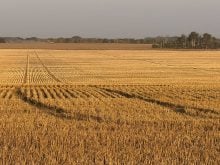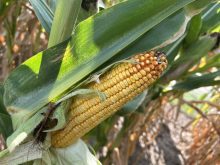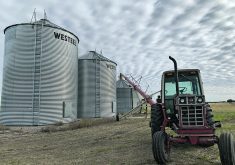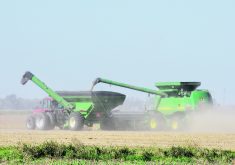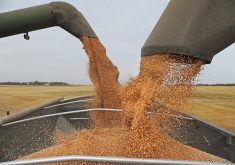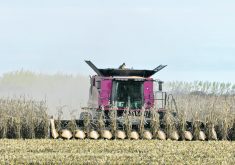Alberta
South
All crops are generally in good condition. Frequent rain showers have limited the need for irrigation in the southeast.
Some canola and peas are in flower.
Diamondback moths and cabbage seedpod weevils have been reported in canola. Cutworms are also a problem in some areas. Producers are urged to scout wheat crops for signs of stripe rust.
Cooler than normal temperatures are affecting corn crops, which need more heat.
Alfalfa haying and baling is underway. Hay crops and pasture conditions are good to excellent.
Read Also
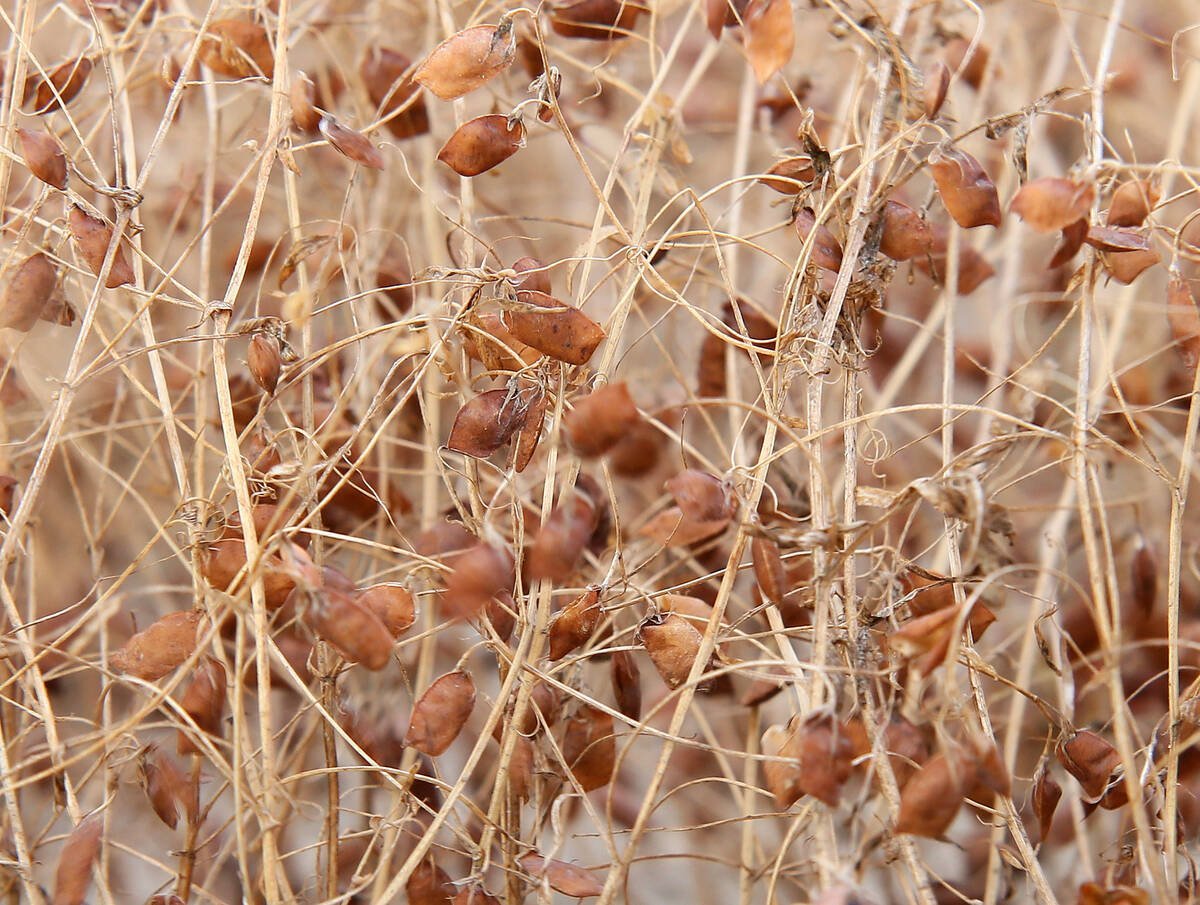
Europe holds promise for Canadian lentils
Pulse Canada is trying to help boost lentil consumption in Europe, which is already the fourth largest market.
Central
All crops are generally in good condition. Timely rain right after seeding got crops off to a good start, and rapid growth continues. Canola is leafing out, limiting weed pressure.
Spotty hailstorms have caused minimal damage.
Cutworms and flea beetles have been reported.
Typically dry regions around Oyen and Monitor are uncharacteristically green because of good rain. Some silage operations have begun. Hay fields and pastures in good condition.
Northeast
All crops are generally in good condition, but more heat would be welcome. Moisture is rated good to excellent.
An isolated hailstorm near Ponoka caused major crop damage.
Localized outbreaks of wireworms, cutworms and flea beetles have been reported.
Herbicide spraying is nearing an end as crops develop.
Hay and pastures are in good condition.
Northwest
All crops are generally in good condition, although more heat would be welcome. Soil moisture is rated as good. Hay crops and pastures are rated as good, but more heat would help them, too.
Scouting is underway for bertha armyworms and cabbage seedpod weevils.
Heavy rainfall reported last week in the Grande Cache region.
Peace
All crops are generally in good condition.
Forty to 70 millimetres of rain fell in the region last week. Standing water is an issue in some areas, but overall soil moisture conditions are rated as good to excellent. Rain has hindered herbicide spraying operations.
Tame hay and pasture conditions are rated as good.
MANITOBA
SOUTHWEST
Continued rain drenched cropland, but the arrival of warm, sunny weather at the end of last week raised hopes that saturation damage could be minimized. Scattered and severe storms buffeted some fields.
Flea beetles and cutworms have caused some reseeding.
Farmers are having trouble with weed control because soaked fields have prevented spraying. Winter wheat crops are showing damage from overly moist conditions.
Pastures and hay fields are in good condition but need warm weather to be more productive.
NORTHWEST
Warm, dry weather has brought relief to farmers who are struggling to get onto fields to manage crops. There is concern about disease.
Wild storms hit some areas. Hail was reported near Ochre River. Some fields have significant ponding and the worst-hit fields have patches of dead crop and yellowing. Dry weather is necessary to save many crops.
Winter wheat is flowering while spring cereals have reached the flag and heading stages. Canola crops are moving toward flowering, with the earliest seeded crops already in bloom.
Weed control has been sporadic because of the weather. Hay and pastures are good but need warmth.
CENTRAL
The arrival of warm, dry weather has relieved some of the saturation stress. Cereal crops are advancing well, with some reaching the heading stage in eastern regions, while canola crops are in many stages of development up to early flowering.
Oat crops are reporting bacterial blight. Wheat streak mosaic and barley yellow dwarf are also present. Sclerotinia control is underway and farmers are assessing diamondback moth larvae counts.
Saturated soybeans have yellowing and iron chlorosis. Farmers are having trouble spraying because of the wet conditions. Dry weather is needed for proper crop management.
Pastures and hayland are in good condition.
EASTERN
Wet weather was replaced by dry weather at the end of last week, so saturated crops have had a chance to advance.
Farmers are having trouble with weed and disease control because of the wet soil.
Winter wheat and fall rye are flowering and heading. Spring cereals and canola are advancing. Most crops are doing OK because the rain was not as extreme in eastern areas as it was further west.
Most pastures and hayland are in good condition, but there are dry areas in the southern part of the region.
SASKATCHEWAN
Saskatchewan farmers have finished seeding all but a few acres of this year’s crop. Planting, which was 98 percent complete as of June 18, was further delayed last week by widespread rain that added more moisture to already wet cropland. Excess moisture and lack of heat have delayed crop development across the province.
Crops that have emerged are in good to fair condition with some areas experiencing moisture stress and yellowing. Overall, crop development is normal to behind normal, depending on the region.
Farmers across the province are dealing with wet soil conditions, and spraying is delayed in many areas.
SOUTH
Seeding is mostly complete in southern regions, and crop development is normal to behind normal. Most areas received more rainfall last week, with amounts ranging from a few millimetres to 100 mm in the Tantallon and Gull Lake areas.
Some areas received hail and suffered crop damage. Crop stress is evident in some regions because of excess moisture. Saturated fields have also delayed spraying.
Hay crops are heavy, and pastures are in good shape. Haying is expected to begin early.
The usual variety of crop pests is evident, including flea beetles, cutworms, cabbage seedpod weevils and gophers in the southwest.
CENTRAL
Topsoil moisture in east- and west-central Saskatchewan is roughly 60 percent surplus and 40 percent adequate. Most regions received more rain last week, adding to already abundant water supplies. In some areas, producers are dealing with severe flooding and crop damage because of hail and excess moisture. Some communities around Saskatoon and Yorkton have now received more than 350 mm of rain since April 1.
Tornadoes were reported west and north of Saskatoon. Crop development throughout the region has been slow, and spraying is delayed in some parts. Farmers were busy last week controlling weeds, monitoring crops and preparing haying equipment.
NORTH
Seeding is mostly complete across Saskatchewan’s northern grain belt.
Topsoil moisture across the region is adequate or excessive. Many crops are developing slowly because of lack of heat. Crops in the northwest and northeast are showing signs of moisture stress. Some, particularly canola in the northeast, may not recover completely without warm weather.
Weed infestations are becoming a concern and spraying has been a challenge, particularly in the northeast. Pastures across the north are excellent and hay yields should be average to above average.
Cereal and oilseed crops in the northwest are reported in mostly good condition. Crops in the northeast range from fair to good.


